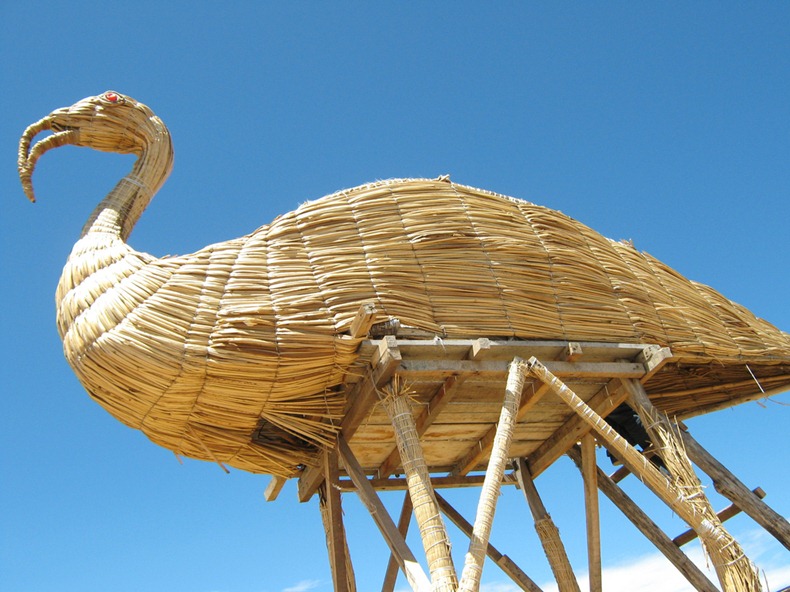Lake Titicaca is a lake located on the border of Peru and Bolivia, about 3,811 meter above sea level, making it the highest commercially navigable lake in the world. By volume of water, it is also the largest lake in South America.
Titicaca is notable for a population of pre-Incan people called Uros who live on artificial islands made of floating reeds called totora. These islands have become a major tourist attraction for Peru, drawing excursions from the lakeside city of Puno. The purpose of the island settlements was originally defensive, and if a threat arose they could be moved. The largest island even retains a watchtower almost entirely constructed of reeds.
The totora is a cattail type rush growing native in the lake. Its dense roots support the top layer, which rots and must be replaced regularly by stacking more reeds on top of the layer beneath. The islands change in size, and more are created as the need arises. The surface of the islands are uneven, thin, and walking on it feels like walking on a waterbed. The unwary might not notice a thin spot and sink a leg or more into the frigid waters of the lake.
Much of the Uros' diet and medicine also revolve around these totora reeds. When a reed is pulled, the white bottom is often eaten for iodine. When in pain, the reed is wrapped around the place in pain to absorb it. Also if it is hot outside, they roll the white part of the reed in their hands and split it open, placing the reed on their forehead. In this stage, it is very cool to the touch. The white part of the reed is also used to help ease alcohol-related hangovers. They also make a reed flower tea. Food is cooked with fires placed on piles of stones.
The floating islands are protected within the Bay of Puno and are home to 2000 or so Uros. They live by fishing, weaving and now, tourism. They catch fish for themselves and to sell on the mainland. Uros also hunt birds such as seagulls, ducks and flamingos, and graze their cattle on the islets. They also run crafts stalls aimed at the numerous tourists who land on ten of the islands each year.
It is a lot of work to maintain the islands. Because the people living there are so infiltrated with tourists now, they have less time to maintain everything, so they have to work even harder in order to keep up with the tourists and with the maintenance of their island. Tourism provides financial opportunities for the natives, while simultaneously challenging their traditional lifestyle.


























